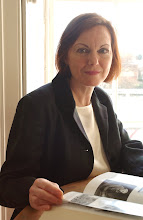
 Coral Still's 5 x great grandfather, William Thorne, born about 1804, came to London from Dorset before 1829, which was the year that he married Mary Ann Stockwell at All Souls, Marylebone. He was a painter and wallpaper hanger with premises at 10 Tottenham Street (1839 Trade Directory for London), pictured above as it is now. At least one of his sons and grandsons also followed this profession, which would have been much sought after with the growing affluence of Bloomsbury.
Coral Still's 5 x great grandfather, William Thorne, born about 1804, came to London from Dorset before 1829, which was the year that he married Mary Ann Stockwell at All Souls, Marylebone. He was a painter and wallpaper hanger with premises at 10 Tottenham Street (1839 Trade Directory for London), pictured above as it is now. At least one of his sons and grandsons also followed this profession, which would have been much sought after with the growing affluence of Bloomsbury.Unfortunately, in his late forties, William broke his hip falling from a ladder and died at University College Hospital, Bloomsbury, after gangrene set in.
At the time of William's death there was little that could be done for severe fractures, particularly those in which the bone penetrated the skin and which almost always became infected. These compound fractures usually necessitated amputation of the limb although amputating a leg at hip or upper thigh level was particularly difficult and dangerous. If William died before 1846 there would have been no anaesthetics to deaden the pain of amputation because it was not until October of that year that ether was first used to anaesthetise a patient undergoing surgery.
In December 1846, Robert Liston (1794-1847) at University College Hospital, performed the first major operation under ether anaesthesia in Europe. This was, in fact, a mid-thigh amputation of the left leg on a man named Frederick Churchill, who subsequently recovered. Accustomed to operating at speed without the benefit of anaesthesia, Liston removed the leg in twenty-eight seconds!
The picture above shows Liston performing the operation watched by a number of colleages including Joseph Lister (1827-1927) - standing second left - who went on to develop the concept of antisepsis. He cleaned wounds, particularly those related to compound fractures, with carbolic acid. Antiseptic surgery was adopted at University College Hospital and many other hospitals. Lister's idea was based on Louis Pasteur's belief that 'germs' of putrefaction were carried in the air. This was in the 1860s although it would be another twenty years before the first 'germs' (ie. bacteria) were seen under the microscope.
